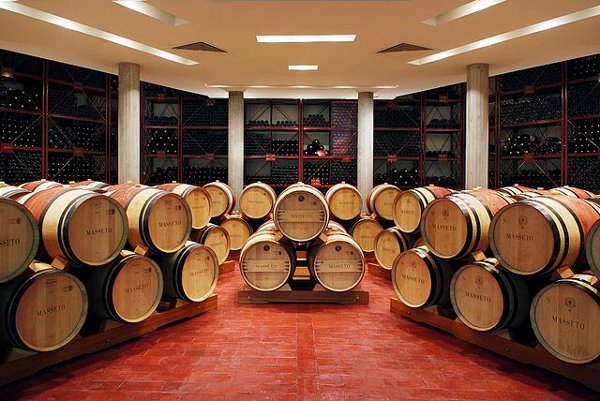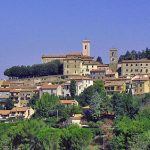Bolgheri – Castagneto Carducci
From Bolgheri in a few kilometers, driving through a gentle climb, we arrive at the delightful village of Castagneto Carducci is named after the great poet who lived here in his youth. With its walls and its medieval, Castagneto Carducci is worth a visit relaxed. The castle belonged to the Gherardesca, has been renovated several times and now has the form of a mansion. Further among the narrow streets of the village cakes meets the seventeenth-century oratory of SS. Crucifix on the main altar preserves a thrilling wooden crucifix of the Pisan school of ‘400. Carducci lovers will be happy to know that Castagneto was named “Literary Park” in 1995. Among his most obvious is Espinasse Moratti Palace, which was home to the poet until 1849. But Castagneto also offers a special meeting craftsmanship: the renowned workshop “Art and Fashion” of Moranti for decades sews and packages tailored Casentini, safari and hunting clothes unmistakable elegance with fabrics ranging from raw silk to cotton khaki, the stupendous velvets. Gorgeous clothes and unobtainable elsewhere, requested by celebrities around the world (Art and Fashion Florin Cristea, tel. 0565.763694).
You can combine a visit to Castagneto Carducci half a day at the beach in Marina di Castagneto, together with Marina di Donoratico, offers a sandy beach sheltered by a dense pine forest. And finally you can dine in style at Bambolo (The Bambolo, tel. 0565.775206) or back to Castagneto and enjoy pancakes with ricotta cheese and rosemary pigeon in good, local restaurant Bagnoli (Bagnoli Restaurant, tel. 0565.763630).
Sightseeing in Castagneto Carducci
Gherardesca Castle, Rectory of St. Lawrence, Church of SS Crucifix, Church of Our Lady of Mount Carmel, Center Carducci (Via Carducci, 59), Museum Archives, Piazzale Belvedere
Oasis “Marsh Wildlife Refuge in Bolgheri”
“Marquis Mario Incisa della Rocchetta
Where and how to get there:
In Tuscany, the Municipality of Castagneto Carducci (LI).
Coming from the North: Exit California on Aurelia, continue south, came to the church of San Guido Bolgheri, we proceed further towards the south beyond the beginning of the cypress avenue at about 500 mt .. On the right. Oasis entrance.
Coming from the South: Exit Donoratico Castagneto Carducci on Aurelia, continue north, after about 8 km away., 500 mt. before the Cypress Avenue entrance on the left Oasis.
Extension: 513 acres
Management: Agreement between the property Engraved della Rocchetta and WWF Italy.
Environment: ditto
Flora and Fauna: sandy coastline is home to species psammophilous characteristics (sea lily, sea Sea Holly) while the coastal dune Juniper cuddly, Phoenician juniper, pine, Mastic, Holm; hydric wood with Ash leaved behind the dunes, seasonal ponds more or less extended, wet meadows and cultivated areas.
The Oasis offers winter refuge, among others, Teal, Wigeon, Shoveler, Pintail, Gadwall, Mallard, Greylag Goose (symbol of the oasis), Crane, Pilgrim, Pigeon, Dove, Lapwing and Golden Plover. In spring Pitti
but real, Fighter, Knight of Italy, Purple Heron, Bittern, Bee-eater.
Nesting Lesser Spotted Woodpecker, Treecreeper, Green Woodpecker, breasted, Cuckoo, Nightingale. Among the mammals are present: Fallow Deer, Roe Deer, Wild Boar, Porcupine, Badger, Wild Rabbit, Hare. Among the reptiles: marsh tortoise, Grass Snake, Viper, lizard.
Facilities: Visiting the museum with 6 observers and a lookout tower. Nature trail for schools with two observers.
Views and useful numbers: open from October 15 to May 31. Visiting hours :9,00-12, 00 14.00-16.30. Views EVERY FRIDAY ‘and Saturday. Group and school on TUESDAY ‘. The tours are guided. It requires the utmost punctuality.
E ‘must be booked at the Section WWF Piombino – Val di Cornia
Tel / fax 0565-224361 e-mail: wwfpiomb@tin.it
L’Oasi di Bolgheri.
Fulco Pratesi, president of the Italian WWF in 1984 wrote, “In the beginning there was Bolgheri. WWF Then came the Italian.”
In 1959, Mario Incisa della Rocchetta decided to transform 60 acres of marsh, and 453 acres of pastures and cultivated fields that surround them in the first Italian private oasis. In 1966 he became, with the Oasis of Burano, the first Italian oasis. The same year, the Marquis’ with Fulco Pratesi, founded the Italian WWF.
Geographical context and environmental characteristics.
The Wildlife Refuge in Bolgheri, inserted in the system of the oasis of the WWF Italy, is located between the railway and the Tyrrhenian sea, and extends to about 513 acres entirely within the territory of the Municipality of Castagneto Carducci. Keeps the original aspect of the coast with alternating crops and leafy hedges followed by flooded fields during the winter season, these happen to fresh water ponds surrounded by forest flooded ossifilo Ash (Fraxinus angustifolia), which attach to absolute uniqueness this environment
The coastal dune forest separates the ponds from the natural beach of extraordinary beauty, dominated by pioneer species such as the sea lily (Pancratium maritimum), Sea Holly Sea (Eryngium maritimum) and Ruchetta sands (Cakile maritima).
The fauna
The Wildlife Refuge in Bolgheri was among the first Italian wetlands to have been awarded the “Ramsar area” (in 1977) because of its peculiarity to guarantee many species of aquatic birds the presence of an atmosphere appropriate to the winter break and transit spring.
Extraordinary flocks of dabbling ducks in winter present: Mallard, Teal, Wigeon, Gadwall, Pintail, Shoveler, which in the aggregate spring Mazaiole. In winter numerically dominates the Lapwing, with contingent of up to 1,800 individuals, which joins the rare Golden Plover. There are also many Beccaccini.
In spring the Oasis record the transit of numerous species of wading birds: the Black-tailed Godwit, the Fighter, the Spotted Redshank, the redshank, the wood sandpiper, the Knight of Italy and the Avocet are among the most frequent. Even the Purple Heron, Bittern, Little Bittern passing on the ponds in spring oasis.
Among the spring migration to report the oriole, the Jay marine, breeding since 1999, Reed Warbler, the Swallow, the Sand Martin. In the flooded wood nesting Lesser Spotted Woodpecker, rarity Oasis, the torticollis and the Rampichino
http://tuscanysea.com/backoffice/immagini/tuscanysea.com/12-17-5-2013-10-24-251.jpg
http://tuscanysea.com/backoffice/immagini/tuscanysea.com/12-17-5-2013-10-24-252.jpg



